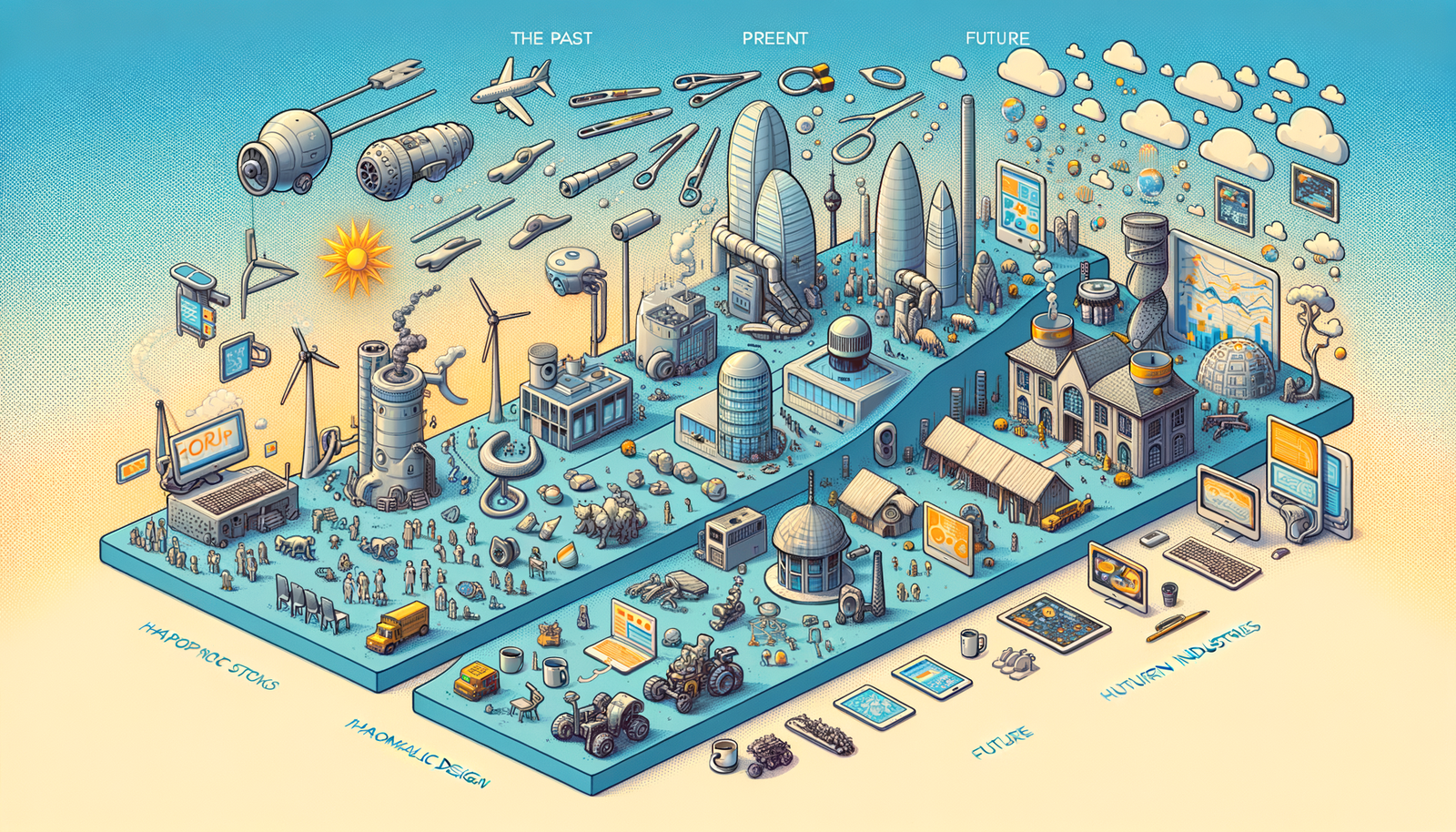Your Cart is Empty
Introduction to Parametric Design
Parametric design is a method of designing objects and structures where the relationships between design elements are used to manipulate and inform the design of complex geometries and structures. It allows designers to define key parameters and constraints, and use algorithms to generate a wide range of design options. This approach facilitates the exploration of innovative solutions and optimizes design efficiency.
The concept of parametric design has its roots in the early days of computer-aided design (CAD) systems, but it has significantly evolved with the advent of more powerful computational tools. Initially adopted in fields such as architecture and engineering, parametric design has expanded its reach to product design, fashion, and even biomedical engineering.
Importance and Applications
Parametric design is gaining traction across various industries due to its ability to streamline complex design processes and enhance creativity. In architecture, it enables the creation of intricate and sustainable structures that would be difficult to conceive using traditional methods. Engineers leverage parametric design for optimizing structural performance and reducing material waste. In the realm of product design, it allows for customization and rapid prototyping, leading to more efficient manufacturing processes.
Notable examples of parametric design include high-profile architectural projects with complex geometries, such as the Beijing National Stadium and the Harbin Opera House. These structures showcase the immense potential and versatility of parametric design in creating visually striking and functionally superior designs.
Current Trends in Parametric Design
Integration with Advanced Technologies
The fusion of parametric design with artificial intelligence (AI) and machine learning is revolutionizing the design landscape. AI algorithms can process vast amounts of data to identify patterns and generate optimal design solutions, enhancing both creativity and efficiency. Additionally, the use of cloud computing and real-time collaboration tools is facilitating seamless coordination among multidisciplinary teams, enabling them to work together from any location.
Enhanced Visualization and Simulation
Advances in augmented reality (AR) and virtual reality (VR) are providing designers with immersive visualization tools. These technologies allow stakeholders to experience and interact with designs in a virtual environment, leading to better decision-making and client engagement. Furthermore, improvements in simulation tools offer real-time feedback and design validation, enabling rapid iteration and optimization.
User-Friendly Interfaces
The development of more intuitive and accessible user interfaces is democratizing parametric design. User-friendly software with drag-and-drop functionalities is reducing the learning curve, making it easier for designers with varying levels of expertise to adopt these tools. Innovations such as voice-controlled and gesture-based interactions are further enhancing the user experience, allowing for more natural and efficient design processes.
Predictions for the Future
AI-Driven Design Automation
The future of parametric design is poised to be heavily influenced by AI-driven automation. AI will increasingly take over complex design tasks, allowing designers to focus on higher-level conceptual work. The potential for generative design to become more mainstream is significant, with AI algorithms capable of generating multiple design iterations based on defined parameters and constraints, leading to innovative and optimized solutions.
Cross-Disciplinary Collaboration
Integrated workflows across different disciplines will become more prevalent, driven by collaborative platforms that facilitate seamless communication and data sharing. Cloud-based platforms will play a crucial role in enabling real-time collaboration among architects, engineers, and other stakeholders, fostering a more holistic approach to design and problem-solving.
Sustainability and Eco-Friendly Design
As sustainability becomes increasingly important, parametric design will focus on eco-friendly practices. Software tools will be utilized to optimize material usage, reduce waste, and enhance energy efficiency. This sustainable approach will not only benefit the environment but also result in cost savings and improved performance of designed products and structures.
Challenges and Opportunities
Technical and Implementation Challenges
Despite its advantages, the adoption of advanced parametric design tools comes with challenges. Technical barriers include the need for high computational power and specialized software knowledge. Additionally, issues related to data security and intellectual property must be addressed to ensure the safe and ethical use of parametric design technologies.
Opportunities for Innovation
The evolving landscape of parametric design presents numerous opportunities for innovation. New business models and services can emerge, leveraging the capabilities of parametric design to offer customized and efficient solutions. Areas for future research and development include the integration of parametric design with emerging technologies such as blockchain and the Internet of Things (IoT).
- Development of new business models and services.
- Integration with emerging technologies like blockchain and IoT.
- Enhanced capabilities for customization and efficiency.
Skills and Education
The rapid advancement of parametric design necessitates continuous learning and skill development. Educational programs and training courses must evolve to keep pace with technological advancements, ensuring that designers are equipped with the necessary knowledge and skills. Interdisciplinary learning, combining principles of design, engineering, and computer science, will be crucial in preparing the next generation of parametric designers.
Conclusion
The journey of parametric design, from its early days to its current state, highlights its transformative impact on various industries. The integration of advanced technologies, enhanced visualization tools, and user-friendly interfaces are shaping its future, making it more accessible and efficient. As we look forward, AI-driven automation, cross-disciplinary collaboration, and a focus on sustainability will drive the evolution of parametric design.
Staying updated with the latest developments in parametric design is essential for professionals and enthusiasts alike. Engaging with resources and communities dedicated to this field will foster continuous learning and collaboration, enabling individuals to harness the full potential of parametric design in their respective domains.







